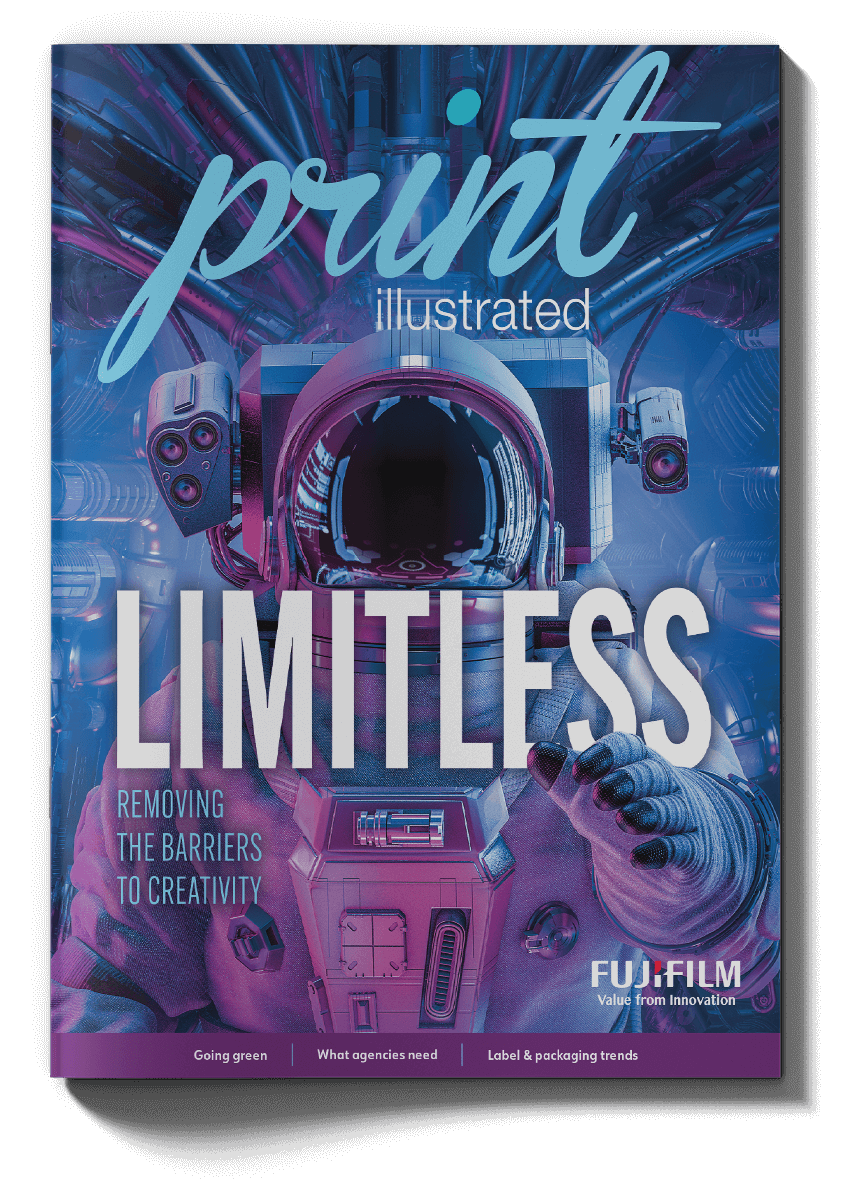“Being good in business is the most fascinating kind of art.” — Andy Warhol
The most creative people at NextPage are always thinking at least two to four steps ahead. A typical creative discussion will include an “If-this-then-that-or-else” line of thinking. The key is to never settle for just one answer. Take small steps to test your ideas before diving all in. Read. Listen. Ask open-ended questions.
If you want to know where Gina Danner, owner and CEO of the Kansas City direct marketing and variable data printing company, stands on all of this—she loves it. For Danner, the first step in creativity is awareness. She makes it a point to read and listen to a variety of information, including podcasts, books and news sources that cover industry specific areas, and political, international, science and social topics.
Next, she thinks about the what ifs. “My daddy always said, ‘God gave you two ears and one mouth. That should tell you something,’” she says. “You never learn by talking.”
Danner believes that creativity is about connecting the dots from disparate knowledge and experiences. For example, during the crux of the pandemic in 2020, she spent a lot of time thinking about the supply chain, following the paper industry carefully. She saw that the pendulums always keep swinging. That awareness allowed NextPage to get in front of the challenges of paper inventory—always staying one step ahead of the curve by keeping a consistent supply on hand.
“By thinking creatively, you can envision and plan your own destiny. You can embrace it, change it, improve it, make your mark upon it.”
– Gary Laney, Founder/CEO, Success Masters
“This has allowed us to better manage our business for success,” Danner says. “Phrases like, ‘That’s how we’ve always done it,’ are like nails on a chalkboard. The phrase is what can lead to the death of a company. We must always be questioning why we do things the way we do. The only way to overcome that phrase is to ask the question, ‘Why do we do it that way?’ and then pretend it was outlawed. If you don’t, how else are you going to achieve the same or better result?”
While print service providers typically think of their businesses in the realm of craftsmanship, it takes a huge amount of creative thinking to be successful today. At NextPage, its team exercises creativity in how they design equipment and production workflows, how they think about staffing and how they interact with customers. Ask Danner and she will tell you that being around since 1988 in an industry with its share of momentous ups and downs and still standing strong means it has had to do creative things to thrive.
“We have to be creative in all sorts of ways that are different than it was two or three years ago,” Danner says. “The supply chain requires us to think creatively about space, cash flow, pricing and client relationships. We have had to change recruiting efforts, and continuously try new and different avenues for finding staff. Identifying and engaging prospects has required tenacity and creativity at every turn. When people are no longer located in a known office, it makes it difficult to connect. From voicemails and emails, and direct mail design, everything must grab and engage. Then, once you get the meeting, you have to be truly unique in your offering.”
And while many leaders are natural problem-solvers, true leaders of a creative vibe allow their staff to be a part of the process. Jumping in and fixing everything does not build a sustainable team. Danner says that can be a death knell for a company today. “As a leader, I have to put my needs for warm fuzzies on the back burner and let those feelings go to the staff. I may see all the mistakes they will make, and I may see it costing extra money, but if a decision isn’t going to negatively impact a customer or a staff member, I am often better off letting the team run with their ideas.”

Getting everyone involved in the creative process
While on a tour of Johnson Wax during his time at Northwestern University’s Kellogg School of Business, Gary Laney remembered seeing something that changed everything he thought about business leadership. The tour took place in the 1980s, back when companies would send documents building to building via vacuum tubes.
Laney and his colleagues soon discovered that the once clever channel of communication was fraught with challenges—expensive ones. Unfortunately, the documents would get stuck in the tubing from time to time, sometimes shutting down the operation and resulting in costly repairs.
Enter employee creativity. Recommending that the company use a tennis ball or super ball to knock the capsules loose, one of the Johnson Wax employees received a $100,000 bonus reward for the idea. Laney, now founder and CEO of Success Masters, found that the incentive to get employees involved was ingenious—creating loyalty, rewards and synergy that is invaluable.
“Phrases like, ‘That’s how we’ve always done it,’ are like nails on a chalkboard. The phrase is what can lead to the death of a company. We must always be questioning why we do things the way we do.”
– Gina Danner, Founder/CEO, NextPage
“In my opinion and experience, leadership and management should encourage and even reward creativity in the workplace,” says Laney, who has had 25 years as an executive in the corporate high-tech and commercial publishing spaces before starting his own company. “Creative thinking is our ability to look at a problem and find new alternatives that solve it. This skillset is important because it helps you look at situations from a fresh perspective.”
In a commercial print industry that is constantly evolving, being creative is a way to develop novel or innovative solutions that do not depend on past or current solutions. It offers the ability to clear your mind and find thoughts and ideas that can transcend the limitations of a problem.
Creativity, Laney says, is linked to an ability to envision the future. “By thinking creatively, you can envision and plan your own destiny. You can embrace it, change it, improve it, make your mark upon it. It makes you more willing—even eager—to navigate uncharted waters and take visionary risks.”
Laney says his leadership development years taught him that whenever there is a problem, there is an equal opportunity. “I now ask myself when a problem presents itself, ‘What is the opportunity here?’ Problems force us to get off our high horses, roll up our sleeves and be creative again.”
In the race to build engagements, communities, and products and services that make a difference, freeing your mind enables uncoupling from the same old, same old and creates incentives of collaborative yore.

